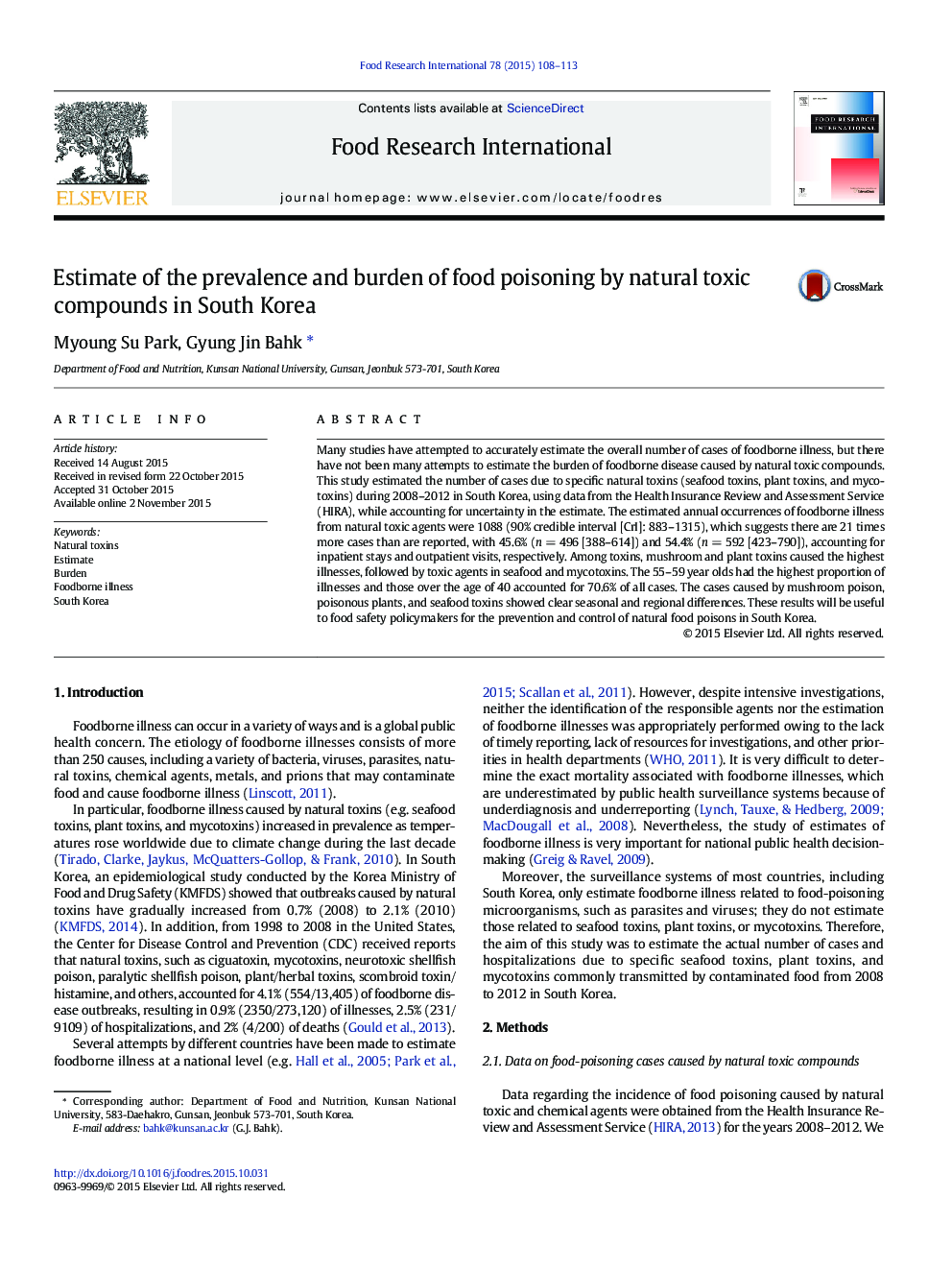| کد مقاله | کد نشریه | سال انتشار | مقاله انگلیسی | نسخه تمام متن |
|---|---|---|---|---|
| 4561299 | 1628470 | 2015 | 6 صفحه PDF | دانلود رایگان |
• This study estimated the number of cases of food poisoning by specific natural toxins in South Korea.
• The estimated annual occurrences were 1088, which are 21 times more than are reported.
• People over the age of 40 accounted for 70.6% of the cases.
• Poisoning caused by mushroom and seafood toxins had seasonal and regional variations.
Many studies have attempted to accurately estimate the overall number of cases of foodborne illness, but there have not been many attempts to estimate the burden of foodborne disease caused by natural toxic compounds. This study estimated the number of cases due to specific natural toxins (seafood toxins, plant toxins, and mycotoxins) during 2008–2012 in South Korea, using data from the Health Insurance Review and Assessment Service (HIRA), while accounting for uncertainty in the estimate. The estimated annual occurrences of foodborne illness from natural toxic agents were 1088 (90% credible interval [CrI]: 883–1315), which suggests there are 21 times more cases than are reported, with 45.6% (n = 496 [388–614]) and 54.4% (n = 592 [423–790]), accounting for inpatient stays and outpatient visits, respectively. Among toxins, mushroom and plant toxins caused the highest illnesses, followed by toxic agents in seafood and mycotoxins. The 55–59 year olds had the highest proportion of illnesses and those over the age of 40 accounted for 70.6% of all cases. The cases caused by mushroom poison, poisonous plants, and seafood toxins showed clear seasonal and regional differences. These results will be useful to food safety policymakers for the prevention and control of natural food poisons in South Korea.
Journal: Food Research International - Volume 78, December 2015, Pages 108–113
